Health
From Working as a Houseboy to Being the Best in School: Ssembuusi’s Story of Overcoming Hardships & Achieving Success
Published
3 years agoon
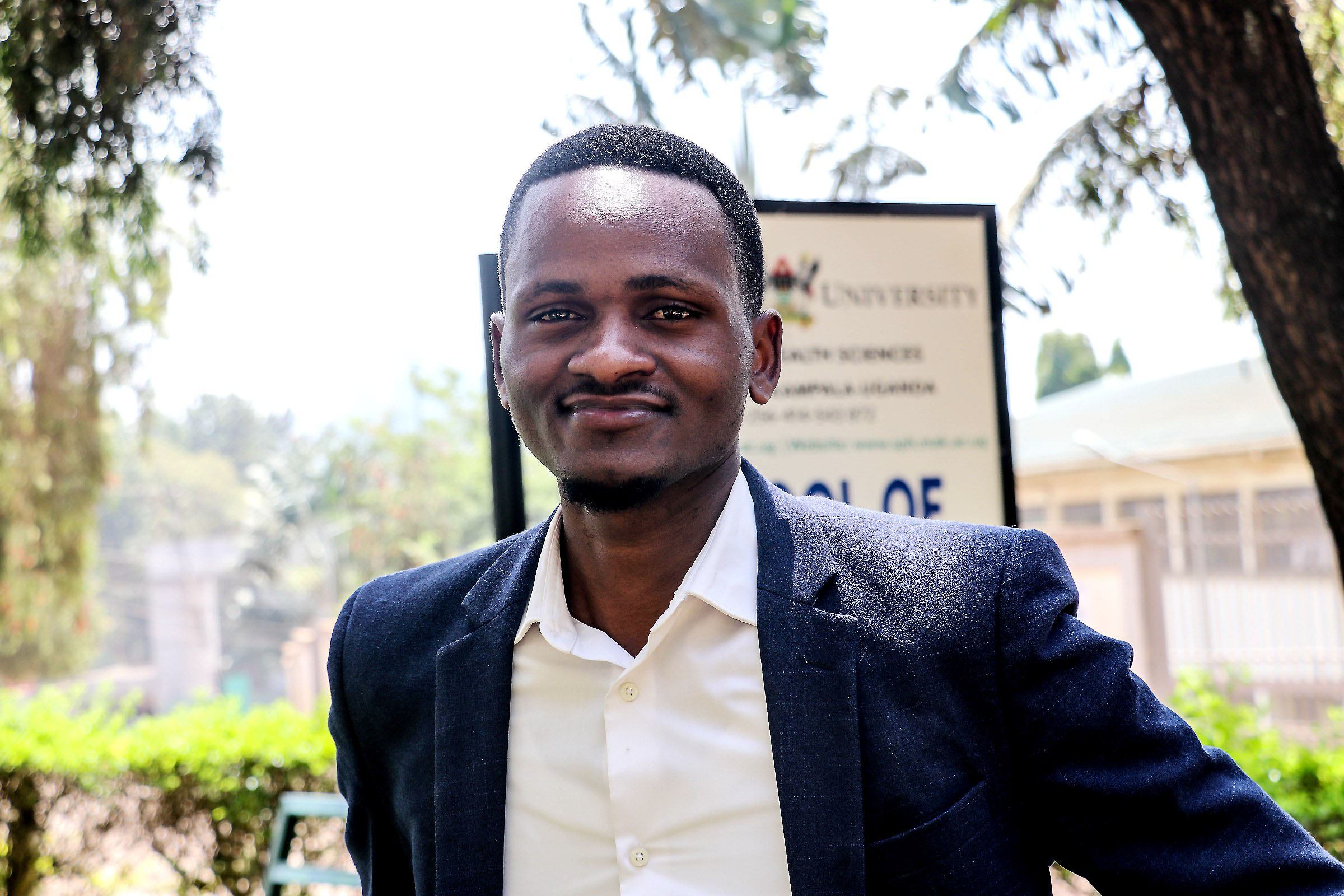
Against all odds, Allan Ssembuusi-Mayengo rose from a house boy to a First-Class student. In this episode of Makerere University’s week-long 73rd graduation ceremony slated to run from February 13-17, 2023 we present to you a story of a determined young man who never let his circumstances define him, and how he achieved the impossible through hard work, perseverance and the power of prayer. He will graduating as a second best in his class at Makerere School of Public Health (MakSPH) with a Cumulative Grade Point Average (CGPA) of 4.42.
With determination and a willingness to take on any job that came his way, Ssembuusi struggled through financial hardship to make a better life for himself. From selling water at the new taxi park to working as a phone repairman and even starting a mobile manicure and pedicure business, he used his entrepreneurial spirit to support himself through University, despite the challenges he faced he carved out a path to success, proving that with grit and perseverance, anything is possible.
Born on 15th February 1996 in Kyabiiri, Kibinge Subcounty, Bukomansimbi District in Greater Masaka to Wilson Mayengo and the late Sarah Nantongo, Ssembuusi is the 4th born in his family.
School life
For the better part of his childhood, Ssembuusi stayed with his step-mother Ms. Margret Namuddu in Kawanda, Wakiso District after a separation between his mother and father. His mother later passed away while he was in Senior four (S.4). With obstacles in his path he hopped from school to school sometimes to dodge school financial requirements.
As early as 2004, he had started school at Bituntu Church of Uganda Primary School in Masaka. He only completed his Primary One class before he was transferred back to Nalujja primary school in Kawempe in Kampala, where he had a short stint of two academic terms.
In 2005, his family shifted to Kawanda, a small town located north-west of Kampala, the Uganda’s capital town. While here, he completed his Primary Two (P.2) at Little Angels Primary School, a private school. The comfort was short lived as he would later relocate to Nakyessanja Church of Uganda Primary School from P.3 until he sat his Primary Leaving Examination -PLE in 2010.
“This was so hard for me, we didn’t even have lunch at school. In the morning, our step-mom would prepare for us tea with acoil bun (Mwana akaaba) bread of Shs. 100, and this would take us all day until our next meal in the evening. My stepmom always had dinner ready whenever we returned from school. It was hard being at school, seeing your colleagues going to the canteen to buy eats during break and lunch time when you are in class “eating shadows” but still I managed to perform well. I started being in the first position in class in P.3 up to when I finished P.7. All these challenges gave me determination and courage to work hard so that I get a better future,” recollects Ssembuusi.
While in P.3, Ssembuusi was top of his class in promotional examinations but he could not access his report card because his parents had failed to pay UShs 2,000 (approximately $0.54).
“While appearing at end of term School assembly, I was announced as being in the first position—the School administration used to announce the 1st, 2nd and 3rd place holders. We didn’t have that money at home so I didn’t pick my report. With this in mind however, I just reported to P.4 at the start of the next year. The headmaster however, came reading out names of those who didn’t pick their reports, and we were all taken back to P.3,” he says.
He recalls crying endlessly by this act but would only console himself knowing the situation back at home and that his father genuinely did not have the money; “We used to eat cassava flour with avocado. We had an Avocado tree at home and we would temporarily forget hunger in seasons the tree would, bear fruits. We would pick avocado and mash it as the sauce.”
As luck would have it, Ms. Grace Nakidde, his teacher provided him the required Ushs.2,000 that granted him access to his report, and then became officially promoted to the next class in 2006.
Ssembuusi, was frequently engaged in various household tasks, which caught the attention of a neighbor. At the age of 12, while in Primary Five, he went to work for this neighbor as a houseboy to earn money for school fees.
“At the time, we were paying around Ushs 10,000 (approximately $2.72), for remedial classes and Ushs 5,000 for lunch. I used to work day and night, but I stayed focused because I wanted to study. I would go to School barefooted. At P.7, I got 9 aggregates and this was the only first grade at my school.”
Ssembuusi’s excellent performance earned him a bursary to attend Central College Kawempe, a school owned by a relative of his employer. Despite this financial aid, he still had to pay for some school materials, which prompted him to continue working at home. “I would wash cars for our neighbor every day to buy books, but I still excelled and was the best in all three terms of S.1,” he said. However, due to the mistreatment he experienced as a houseboy, Ssembuusi confided in his parents, who then spoke to his employer. Unfortunately, this led to the loss of his bursary.
“Since my parents were unable to pay for my education at Central College Kawempe, they transferred me to Luteete Senior Secondary School in Luweero. I am grateful to Mrs. Kiwanuka who, through our shared faith at Elim Pentecostal church in Kawanda, connected me to Luteete where I was able to obtain a half bursary. This required me to raise Ushs 150,000 (approximately $40.82) on my own. Despite this, things were still difficult for me, as I often only had Ushs 20,000 (approximately $5.44) to last me through the entire term.”
Ssembuusi states that the school’s provision of lunch and supper helped him stay focused. He adds, “Sometimes I sold my lunch to afford necessities like books and pens, but I still excelled and remained the best throughout my stay, up to S.4. I scored 13 out of 8 aggregates, the best performance in the school’s 60-year history. I achieved it through hard work and prayer, even fasting dry for 3 days.”
After getting his Uganda Certificate of Education (UCE) results, Ssembusi moved to Wampeewo Ntakke Senior Secondary School along Gayaza Road with the help of his former head teacher Mr. Mike Ssekaggo. He says, “I scored 12 points in BCM/ICT and I remember getting a D1 in Biology Paper 3. I was also the founder and pioneer of the school’s Science Club.” After finishing S.6, he found a job as a porter at a construction site near his school. He adds, “Although students saw me working there, I was determined to survive. Later, my former head teacher helped me get a job as a canteen attendant at his school, where I stayed for 1 and a half years.”
Failing to join University and Resorting to Barber and Taxi Tout
Ssembuusi had always dreamed of going to university, but his journey was not an easy one., Despite sitting for his Uganda Advanced Certificate of Education (UACE) in 2016 with hope to join a university in 2017, he was not admitted to any of the institutions he applied to on his application forms. He lost that year of 2017 and decided to try again in 2018. “I had understood my points, and weights better and thought by trying on a Diploma, I would get admission. I applied for a diploma in Education at National Teachers College NTC Kaliro, but was not admitted once again”
Feeling defeated, Ssembuusi left his job as a canteen attendant and returned home, but struggled to find any opportunities. However, things still weren’t working out and he found himself living with his uncle who was a barber and taught him the trade. He also started working as a conductor on a taxi route from Jinja road-Kawanda-Matugga, where he used to meet his old teachers and colleagues. He felt like a failure, but still held on to hope for better opportunities.
“We used to ply the Jinja road route. I grew up on this route and so I had mastered it. While in this trade, I would meet my teachers, my former colleagues, the students I used to discuss for. For once, I felt like I was a total failure,” says Ssembuusi.

One day while operating as a taxi tout in Wandegeya, he bumped into an old friend, Jackline Nankya, who in 2020 graduated from MakSPH. They had studied together at Wampeewo Ntakke Senior Secondary School. Concerned about him she asked for his contact to check on him. Ssembuusi explained his situation and Jackline told him about the Government Loan Scheme program, a fund that awards study loans to Ugandan students seeking to pursue Higher Education but are financially constrained. She helped him apply for a course in Environmental Health Science, which he made his first choice, and also helped him apply for the Government Loan Scheme.
Ssembuusi was in a dilemma, he had even prepared to go to the United Arab Emirates to do “Kyeeyo” (cheap employment for immigrants to the developed world) with some sisters that were already there. His parents were excited about the prospect of him making money. “I didn’t tell them [parents] when I applied. I told them when I was admitted. I was in a dilemma and in fear of how my parents would react to me leaving an opportunity to work and provide for them.”
He sought advice from a few people, including his boss in the taxi business, before ultimately telling his parents. To his surprise, they were overjoyed when he finally shared his plans with them. They had the assumption that Makerere University was the only university in Uganda.
Life at MakSPH
Determined to succeed, Ssembuusi used all the money he made working in the taxi to buy the requirements needed for his first year. He was so passionate about his studies that he even joined a week before his colleagues and was voted unopposed as class representative. “This is where my journey to perform well started,” he says.
Adding that; “After our first lecture with Ms. Ruth Mubeezi, I felt deeply inspired. I approached her after class and shared my struggles with her. Her words of encouragement and assurance that I would be able to manage school, gave me the courage and determination to push forward. And that’s how I embarked on my journey towards achieving a first-class degree, starting off with a strong 4.6 GPA in my first semester.”
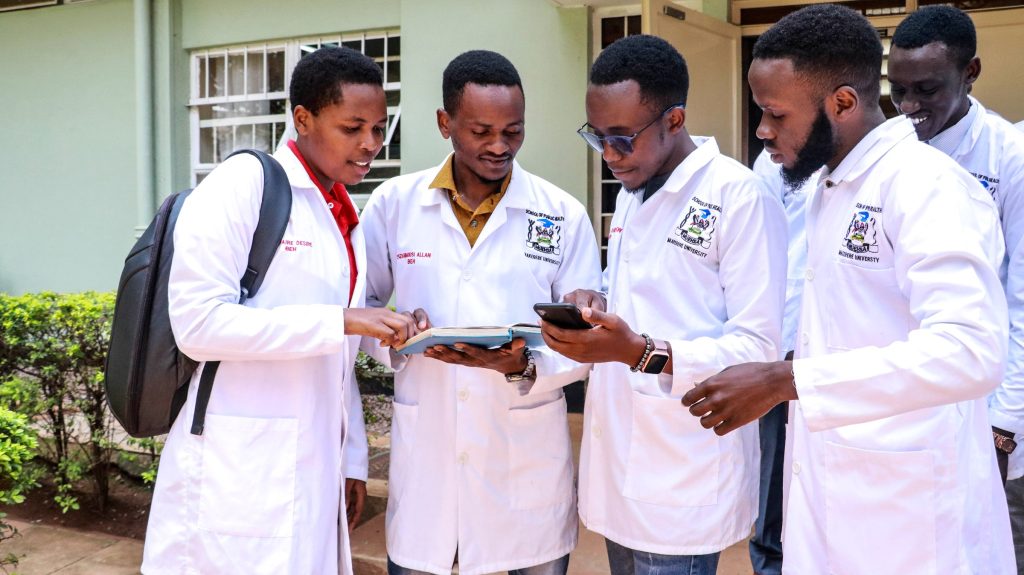
He commuted to school in his first semester, but during a brief holiday before the second semester, he decided to stop commuting and go back to his taxi business in the Old Taxi Park to earn money for accommodation. He was able to get some money and temporarily moved into Nkrumah Hall, one of the halls of residence for male students admitted to Makerere University, named after the great pan Africanist Nkwame Nkrumah of Ghana with a friend Kelvin Langat.
“I wanted to go back to work as a conductor to earn money for accommodation but it was the festive season so things didn’t work out. I decide to sell sugarcanes in Old Taxi Park because most people there, knew me. I used to contribute something and stay with him on the same bed before COVID came in and we had to leave campus,” a teary Ssembuusi recalls.
COVID-19 and Ssembuusi’s campus nail business
As the COVID-19 pandemic swept the world, it brought with it a host of challenges for students like Ssembuusi. With lockdowns in place and classes conducted online, Ssembuusi was forced to find ways to make ends meet. Like many students, Ssembuusi found himself struggling to afford the costs of accommodation, and everyday living expenses.
“I went to New Taxi Park (the old one was closed for renovation at this time) and sold water there. It was a tough moment, because I found so many classmates there boarding taxis to go about their business. I wanted to quit, but I also still wanted to survive,” he says.
The Student Loan Scheme is a cost sharing initiative. The Loan strictly covers the academic component, i.e., Tuition fees, Functional fees, Research fees, Aids and Appliances for Persons with Disabilities (PWDs). For Ssembusi’s case, the loan covered Ushs1.8m fees inclusive of functional fees and he is indebted to the loan scheme; “I am thankful for the Student Loan Scheme for enabling me to continue my education, however, they have not yet paid for my last three semesters, preventing me from accessing my transcript until the debt is fully cleared. Despite the delay in payments, they would still allow us to sit for exams with the assurance that they would pay later.”
It was during this time that Ssembuusi stumbled upon an unexpected opportunity. At a friend’s home, he discovered a salon offering manicures and pedicures. Intrigued, he asked the owner to teach him the trade, and soon found himself learning the skills needed to set up his own mobile manicure and pedicure business.
With the support of his classmates, Ssembuusi’s business quickly took off. Working on almost all of his female classmates, Ssembuusi found himself juggling the demands of her coursework and his business. But he was committed to making it work, and with the help of a loan from a friend, he was able to purchase the equipment he needed to keep his business running.
“I have been doing pedicure and manicure, and all my clients have been my colleagues. I was charging 10,000 to 30,000 Ushs for gel nails. People perceive it as a “low-key job”, and I am sure it’s hard for most campusers to do this kind of work especially on their classmates. I know some people come from advantaged families, but for those of us who have been disadvantaged, please don’t look down on any opportunities or jobs that will help you raise some money to sustain you,” he says.
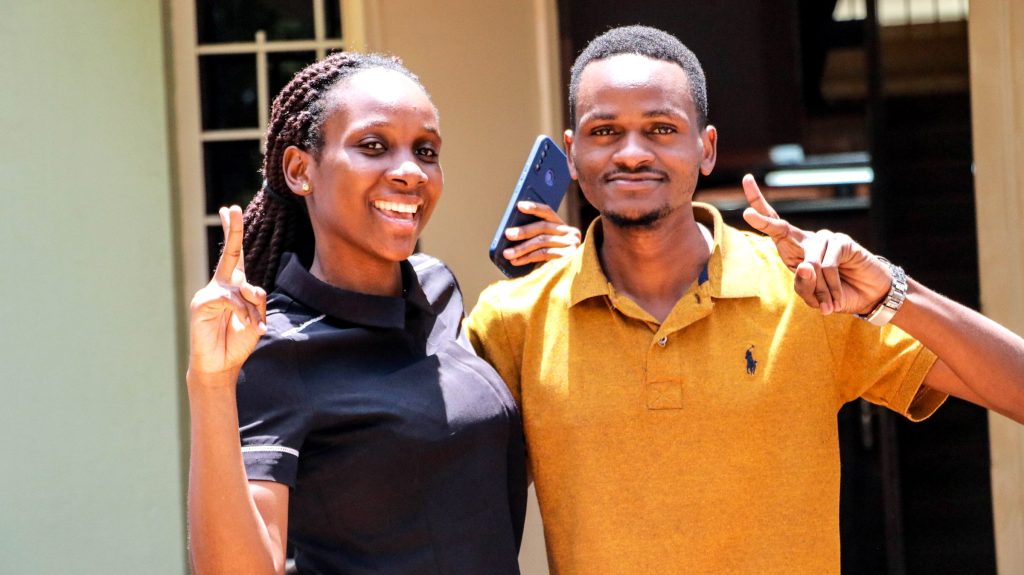
“I think I have worked on almost all my female classmates. The business boomed, I started getting recommendations but it was a challenge on my side to attend lectures and also attend to clients. My course is a full day course, and being a course representative, I had to be around. I managed to schedule my clients in the evenings and over the weekends when I worked all day.
Ssembuusi has throughout his school life struggled with self-doubt and imposter syndrome, but along the way found ways to overcome it through self-improvement and taking advantage of opportunities. He was active in the school community, serving as a class representative and holding leadership positions in Makerere University Environmental Health Students Association (MUEHSA).
He found success in extracurricular activities, such as participating in medical camps and running events. After finishing his course, Ssembuusi sought guidance from his mentors and ultimately landed a volunteer position under the mentorship of Dr. David Musoke, a Senior Lecturer in the Department of Disease Control and Environmental Health at Makerere University School of Public Health (MakSPH). His future goal is to pursue a Masters and eventually a PHD in academia and research. He encourages others to take advantage of opportunities in order to be successful.
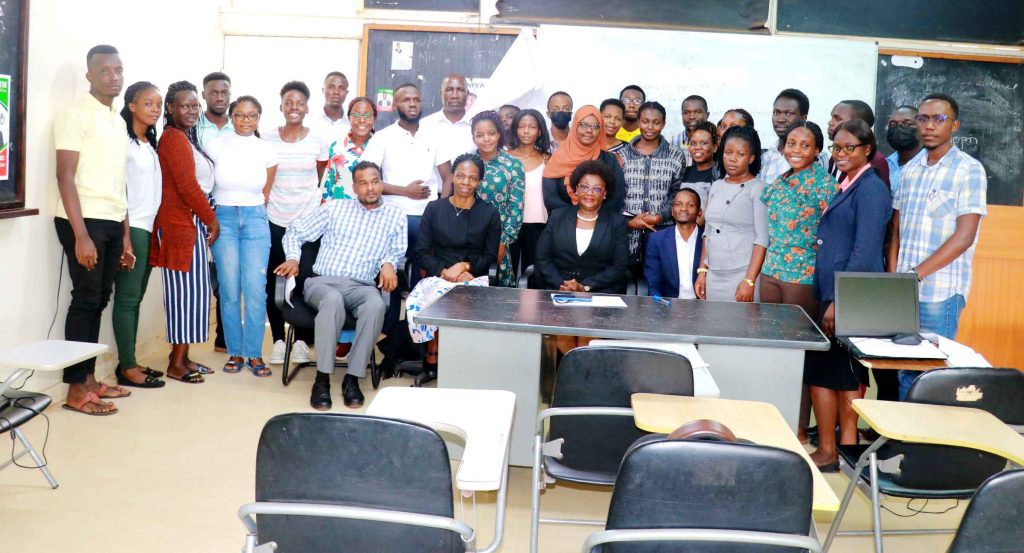
To achieve a first class, one must put in hard work and strive to do their best. “I didn’t set out to achieve a first class, but I now understand its value. A lecturer once told us, ‘Don’t listen to those who say a first class isn’t worth it – if you can earn one, go for it.’ That’s my advice to my peers – aim for the best and don’t be discouraged. I didn’t actively pursue a first class, but my efforts paid off in the form of this distinction,” says Ssembuusi.
He adds; “Mr. Frederick Oporia, who taught me inspection, court etiquettes, and environmental health legislation, is my standout lecturer and role model. Currently the Head of Trauma, Injury, & Disability (TRIAD) unit, he continues to inspire me. Additionally, Dr. David Musoke, who is my mentor, is someone I look up to and strive to emulate in my work.”
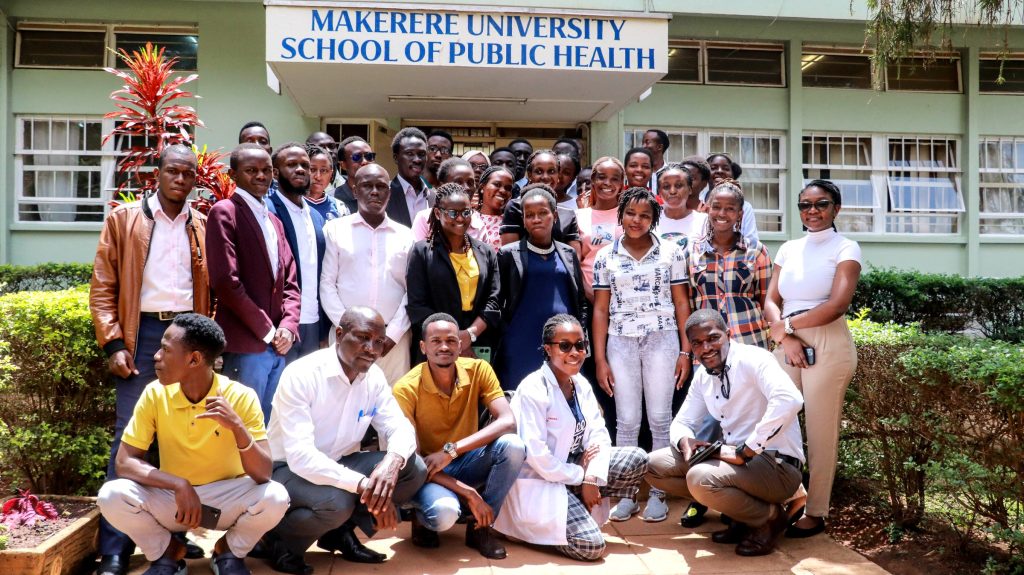
You may like
-
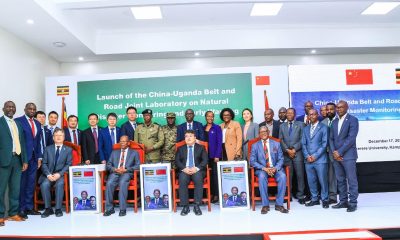

Makerere University and Tsinghua University Launch Landmark China–Uganda Joint Laboratory on Natural Disaster Monitoring and Early Warning
-


Makerere University Explores Strategic Partnership with Tsinghua University in Safety Science, Disaster Resilience and Public Health
-


Inside Uganda’s Silent AMR Crisis: Counterfeit Drugs, Antibiotic Overuse, and What Wakiso’s Evidence Reveals
-
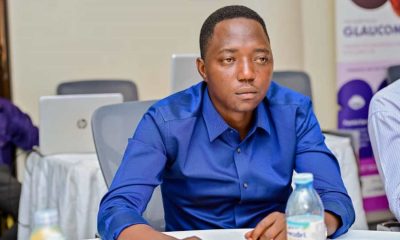

From Mastercard Foundation Scholar to Changemaker: Dr. Ekwaro Ronald’s Vision for Eye Health in Uganda
-


In Honor of the Life and Legacy of Mr. Francis Seletze Ngabirano-A Steady Hand through the Storms
-
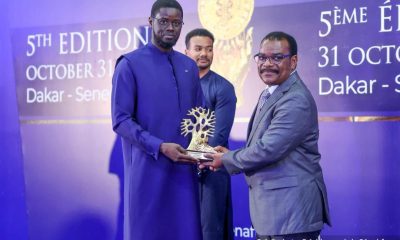

Dr. Michael Makanga and the Galien Africa Special Career Achievement Prize
Health
Makerere University and Tsinghua University Launch Landmark China–Uganda Joint Laboratory on Natural Disaster Monitoring and Early Warning
Published
3 days agoon
December 19, 2025
Makerere University has taken a decisive step in strengthening Uganda’s and Africa’s capacity for public safety, disaster preparedness, and climate resilience with the official launch of the China–Uganda Belt and Road Joint Laboratory on Natural Disaster Monitoring and Early Warning, a flagship collaboration with Tsinghua University of China.
Launched during the Makerere University–Tsinghua University Symposium on Public Safety and Natural Disaster Management, the Joint Laboratory positions Makerere as a continental hub for cutting-edge research, innovation, and policy-relevant solutions in disaster risk reduction, early warning systems, and emergency response. The Laboratory will be hosted by Makerere University and is the only facility of its kind in Africa under this cooperation framework, underscoring its regional and global significance.
A Strategic Partnership Rooted in Research, Policy, and Practice
In his opening remarks, Prof. Barnabas Nawangwe, Vice-Chancellor of Makerere University and Ugandan Co-Director of the Joint Laboratory, traced the origins of the partnership to 2018, when a Makerere delegation visited Tsinghua University and the Hefei Institute for Public Safety Research. He recalled being deeply impressed by China’s advanced capacity in public safety research, disaster monitoring, and emergency management capabilities that directly respond to Uganda’s growing exposure to floods, landslides, epidemics, and other hazards.
The Vice-Chancellor noted that the successful establishment of the Joint Laboratory followed a competitive grant process under China’s Belt and Road Initiative, supported by the Government of Uganda and regional partners, including Nigeria and Côte d’Ivoire. He emphasized that the Laboratory aligns squarely with Makerere’s strategic ambition to become a research-led and research-intensive university, while also advancing its internationalisation agenda.

“This Laboratory will significantly enhance Makerere University’s ability to generate evidence-based research that directly informs government policy and public safety interventions. It will serve not only Uganda, but Africa at large,” Prof. Nawangwe said.
He further underscored the Laboratory’s national importance, noting that similar facilities in China are regarded as national-level laboratories, entrusted with supporting government decision-making and national resilience. Relevant Ugandan institutions, including the Office of the Prime Minister (OPM), UPDF, Uganda Police, Ministry of Health, and humanitarian actors, are expected to actively participate in the Laboratory’s work.
Tsinghua University: Advancing Science Diplomacy and South–South Cooperation
Speaking on behalf of Tsinghua University, Prof. Yuan Hongyong, Dean of the Hefei Institute for Public Safety Research and Chinese Co-Director of the Joint Laboratory, described the initiative as both a scientific milestone and a powerful demonstration of South–South cooperation.
He emphasized that natural disasters transcend national borders and demand collective, science-driven responses. By combining Tsinghua’s technological expertise, including satellite monitoring, AI-driven analytics, and integrated early warning systems, with Makerere’s deep regional knowledge and policy engagement, the Joint Laboratory provides a robust platform for innovation, applied research, and practical solutions tailored to African contexts.

The Laboratory will function not only as a research centre, but also as an operational platform for natural hazard monitoring, early warning, risk assessment, and capacity building, supporting Uganda and the wider African region in building more resilient communities.
Government of Uganda: Research as a Pillar of National Resilience
Representing the Office of the Prime Minister, Mr Frederick Edward Walugemba, reaffirmed the government’s strong support for the Joint Laboratory, recognizing research as a cornerstone of effective public safety and disaster management. The OPM highlighted its constitutional mandate to coordinate disaster preparedness and response through institutions such as the National Emergency Coordination and Operations Centre (NECOC).
He mentioned that the Office of the Prime Minister is committed to working closely with Makerere University and its partners, underscoring the importance of multi-agency collaboration, robust data systems, and timely policy advisories to address the complex, multidimensional nature of public safety challenges.
China–Uganda Relations and the Role of Science Diplomacy
Mr. WANG Jianxun, Commercial Counsellor of the Embassy of the People’s Republic of China in Uganda, lauded the Joint Laboratory as a concrete outcome of the growing China–Uganda Comprehensive Strategic Partnership. He emphasized that the collaboration reflects China’s commitment to knowledge sharing, technology transfer, and people-centred development, particularly in areas such as climate adaptation, disaster risk reduction, and sustainable development.
He also highlighted the Belt and Road Initiative as a framework that extends beyond infrastructure to include scientific cooperation, academic exchange, and innovation-driven development, with the Joint Laboratory standing as a model of how universities can advance diplomacy through science.
Makerere’s Multidisciplinary Strength at the Core
In his concluding remarks, Prof. Nawangwe reaffirmed Makerere University’s readiness to operationalize the Laboratory through a multidisciplinary research team spanning public health, geography, engineering, computing, artificial intelligence, social sciences, and the built environment.
He stressed that effective disaster management must integrate technology, human behaviour, governance, and community engagement, noting the importance of sociological insights in addressing risk perception and public compliance during disasters. Makerere will also engage emerging universities and regional partners to ensure the Laboratory’s benefits are widely shared.
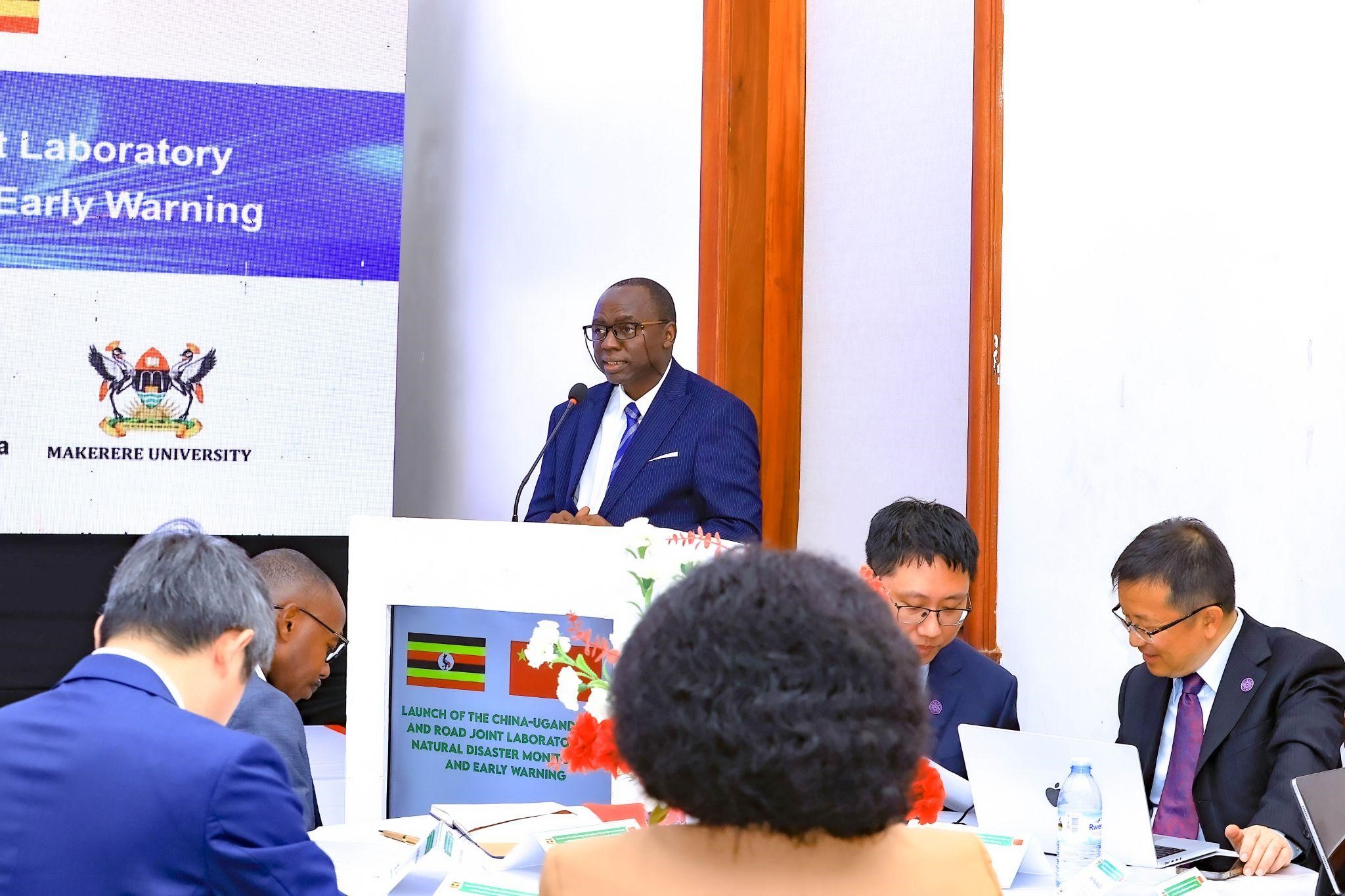
The Vice-Chancellor also commissioned an interim, multidisciplinary coordination committee to operationalise the Joint Laboratory, drawing expertise from health, climate science, engineering, artificial intelligence, social sciences, and government agencies.
Hon. John Chrysostom Muyingo Officially Launches the Laboratory
The Joint Laboratory was officially launched by the Honourable John Chrysostom Muyingo, Minister of State for Higher Education, who applauded Makerere University and Tsinghua University for securing the prestigious grant and advancing Uganda’s science and research agenda.

Hon. Muyingo reaffirmed the Government’s commitment to supporting research that informs national development, public safety, and disaster preparedness. He urged Ugandan researchers to fully leverage the partnership to learn from China’s experience in transforming research into actionable solutions for society.
“This Laboratory is a clear demonstration of how strategic international partnerships can strengthen national capacity, inform policy, and protect lives,” the Minister said, as he formally declared the symposium and laboratory launch open.
Positioning Makerere as a Regional Centre of Excellence
Makerere University already plays a critical role in public safety, disaster preparedness, and early warning through a range of research, training, and operational partnerships. Through the School of Public Health (MakSPH) and the Infectious Diseases Institute (IDI), the University has led national and regional initiatives in epidemic preparedness, emergency response, and early warning, including Field Epidemiology Training, risk prediction modelling, and multi-hazard risk assessments that inform district and national preparedness planning. A national assessment of 716 health facilities conducted by MakSPH revealed widespread exposure to climate-related hazards and systemic preparedness gaps, directly informing the Ministry of Health’s Climate and Health National Adaptation Plan (H-NAP 2025–2030)
Makerere has also been at the forefront of disaster risk reduction innovation and community resilience through the Resilient Africa Network (RAN), which has supported scalable, evidence-based solutions such as EpiTent, a rapidly deployable emergency health facility; RootIO, a community-based radio communication platform used for risk communication and early warning; and RIAP Horn of Africa, which advances climate-resilient water harvesting technologies for drought-prone pastoralist communities.

Earlier, the University led the USAID-funded PeriPeri U project (2014–2019) and a disaster management collaboration with Tulane University, strengthening applied research, training, and early warning systems across Africa, efforts that laid the foundation for RAN and Makerere’s current disaster resilience agenda.
In collaboration with government and international partners, Makerere has supported the strengthening of Emergency Operations Centres, including the development of Regional Emergency Operations Centre (REOC) dashboards to improve real-time coordination and situational awareness. IDI has further contributed to epidemic intelligence and early warning, supporting districts to update WHO STAR-based risk calendars, strengthen sub-national preparedness, and enhance real-time decision-making during outbreaks. Makerere teams have also been deployed regionally to support Marburg and Mpox outbreak responses in Rwanda and the DRC, while advancing outbreak modelling as an early warning tool for high-consequence infectious diseases.
Complementing these efforts, the Department of Geography, Geo-Informatics and Climatic Sciences conducts transdisciplinary research on floods, landslides, droughts, soil erosion, and land-use change, using geospatial analysis, earth observation, modelling, and participatory methods to translate complex data into actionable early warning and risk information for policymakers and communities. These ongoing initiatives collectively demonstrate Makerere University’s established capacity in public safety, disaster preparedness, and early warning, providing a strong operational and scientific foundation for the China–Uganda Belt and Road Joint Laboratory.
With strong backing from the Governments of Uganda and China, as well as leading international partners, the China–Uganda Belt and Road Joint Laboratory on Natural Disaster Monitoring and Early Warning is poised to become a regional centre of excellence for disaster risk reduction research, training, and innovation.
The Laboratory will contribute to improved early warning systems, faster emergency response, stronger policy coordination, and enhanced scientific capacity, cementing Makerere University’s role at the forefront of addressing some of the most pressing public safety challenges facing Uganda, Africa, and the global community.
Caroline Kainomugisha is the Communications Officer, Advancement Office Makerere University.
Health
Makerere University Explores Strategic Partnership with Tsinghua University in Safety Science, Disaster Resilience and Public Health
Published
6 days agoon
December 16, 2025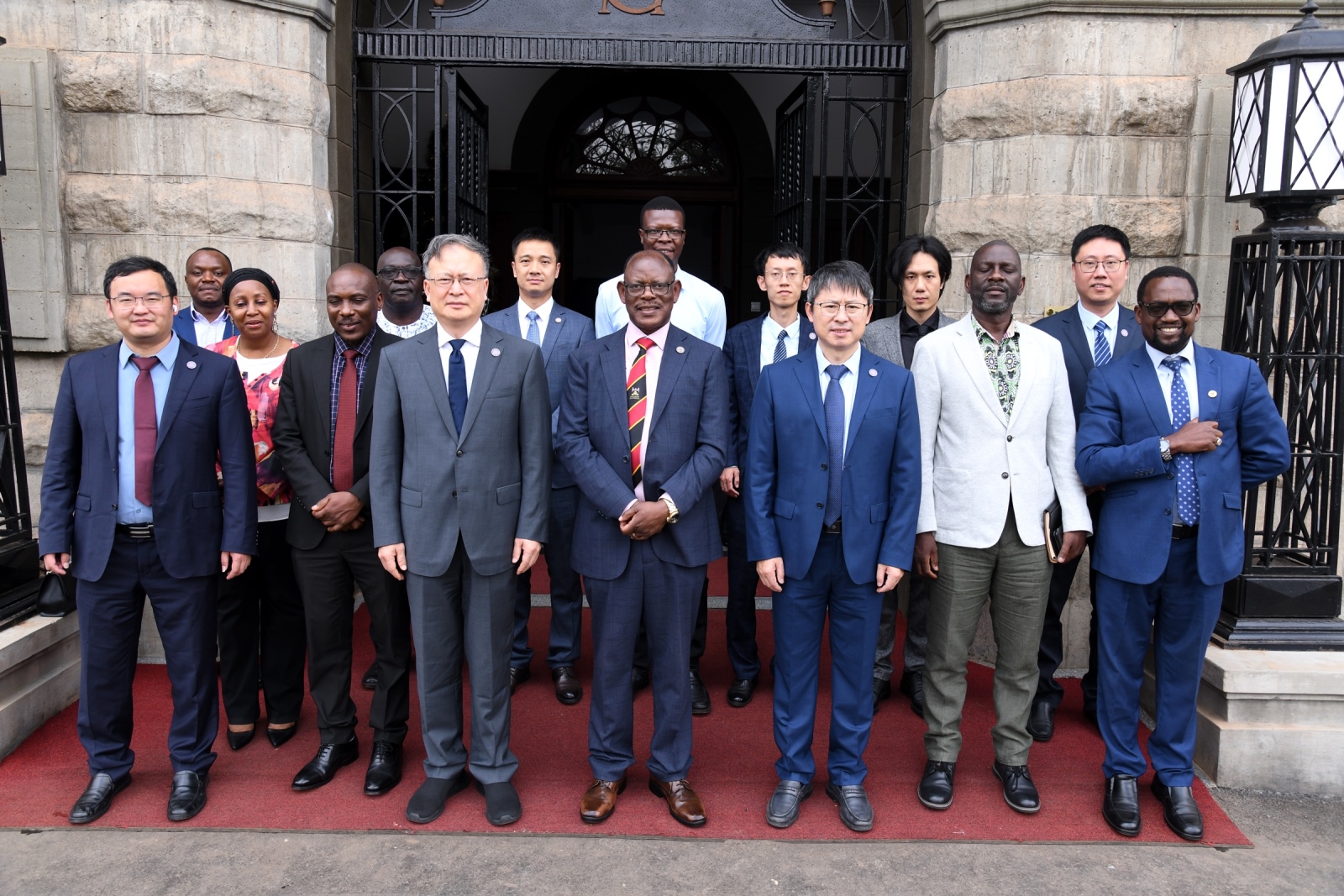
Makerere University has taken a significant step toward strengthening global research collaboration following a high-level meeting between Vice Chancellor Prof. Barnabas Nawangwe and a delegation from Tsinghua University’s Hefei Institute for Public Safety Research, one of China’s leading centres of excellence in disaster prevention, public safety, and emergency management. The engagement marked a renewed commitment to advancing scientific cooperation between the two institutions, particularly in addressing complex environmental and public health challenges that continue to shape national and global development.
A Partnership Anchored in Shared Challenges and Global Priorities
In his remarks, Prof. Nawangwe emphasized that the concept of comprehensive public safety, spanning natural disasters, epidemics, infrastructure failures, and social risks, is increasingly relevant to all colleges and disciplines at Makerere. Uganda’s experience with epidemics such as Ebola, cholera, and COVID-19; frequent landslides in mountainous regions; flooding events; and rising traffic-related incidents place the University in a unique position to contribute applied research, community-based insights, and local knowledge to a global scientific dialogue.
He noted that the Tsinghua presentation revealed new areas of alignment, particularly in epidemic modelling, early-warning systems, and integrated emergency management, areas where Makerere’s public health scientists, medical researchers, and social scientists have extensive expertise.
“This collaboration offers meaningful opportunities for nearly every college at Makerere,” he noted. “Public safety touches the environment, public health, engineering, social sciences, ICT, humanities, and urban planning. The challenges we face as a country make this partnership both timely and essential.” Prof. Barnabas Nawangwe noted.
Tsinghua University: A Global Leader in Comprehensive Public Safety.
The delegation from Tsinghua University outlined China’s national investment in Public safety over the past two decades, an effort driven by the recognition that life and security are the foundation of sustainable development. Tsinghua’s Hefei Institute for Public Safety Research has developed nationally recognised research platforms and large-scale simulation facilities dedicated to Natural disaster modelling (earthquakes, landslides, floods, typhoons, Infrastructure and urban systems safety, Public health emergencies and epidemic preparedness, Early-warning, monitoring, and emergency communication, Traffic and transportation safety, Post-disaster reconstruction and resilience planning.
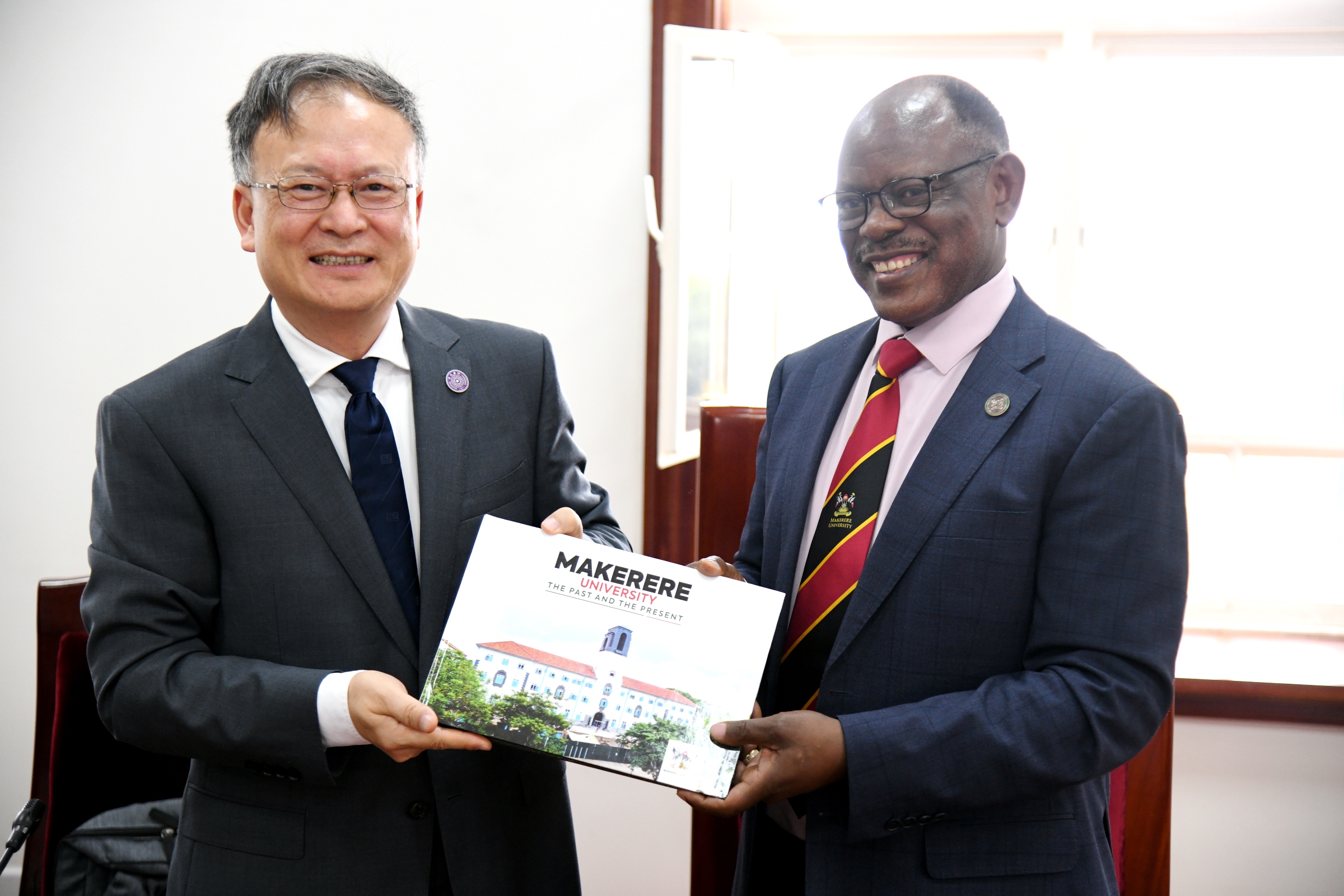
Their systems currently support over 100 provincial and municipal emergency management centres in China, underscoring their global leadership in practical, scalable solutions for disaster risk management. The delegation reaffirmed that Uganda’s lived experience with multiple hazards presents opportunities for meaningful knowledge exchange. They expressed particular interest in learning from Makerere’s work on epidemic response, community health systems, and the social dimensions of disaster management.
Emerging Areas of Partnership
The meeting identified several promising pathways for long-term collaboration:
1. Joint Research in Disaster Risk Reduction and Climate-Related Hazards
Both institutions expressed readiness to co-develop research projects on landslides, floods, urban resilience, and multi-hazard modelling, drawing on Tsinghua’s advanced simulation technologies and Makerere’s environmental expertise and geographic field realities.
2. Public Health Emergency Preparedness and Epidemic Response
Makerere’s renowned public health schools and research centres will collaborate with Tsinghua on epidemic prediction, early-warning systems, and integrated preparedness frameworks, leveraging Uganda’s decades of experience managing high-risk disease outbreaks.
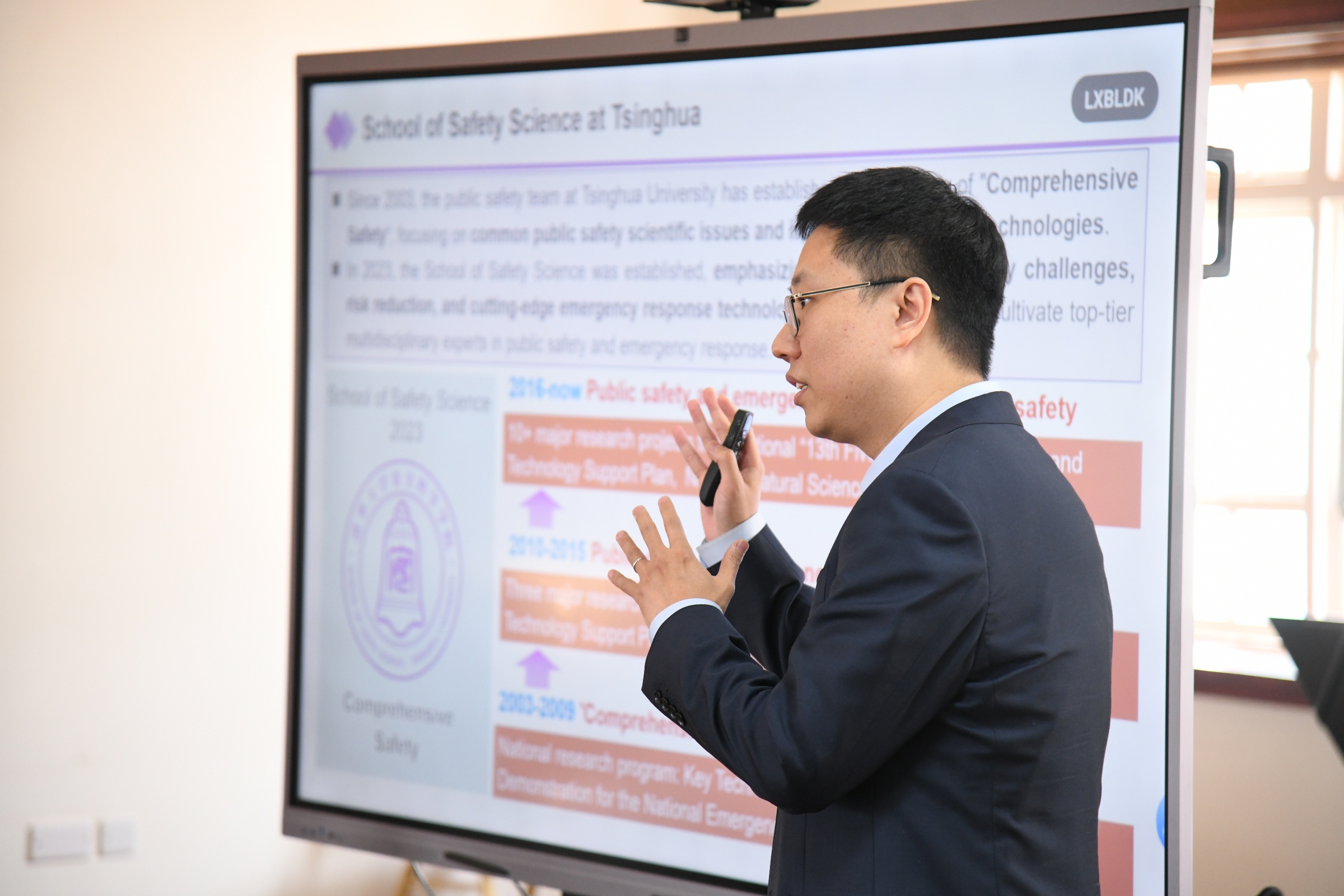
3. Infrastructure and Urban Safety, Including Traffic Systems
With Uganda experiencing rapid urbanisation and high rates of motorcycle-related road incidents, Tsinghua shared insights from China’s own transformation, including infrastructure redesign, transport modelling, and public transit innovations. Collaborative work in this area would support city planning and road safety interventions in Kampala and other urban centres.
4. Academic Exchange and Capacity Building
Both sides expressed interest in student exchanges, staff mobility, co-supervision of postgraduate research, and specialised training programmes hosted at Tsinghua’s world-class safety research facilities.
5. Development of a Joint Public Safety Laboratory at Makerere
The institutions are exploring the establishment of a collaborative safety research platform in Uganda. This initiative could serve as a regional hub for innovation in emergency management, environmental safety, and technology-driven risk assessment.
Towards a Long-Term, Impactful Collaboration
The meeting concluded with a shared commitment to develop a structured partnership framework in the coming months, supported by both universities and aligned with Uganda–China cooperation priorities. Both teams acknowledged that the partnership must yield tangible results that enhance community resilience, bolster national preparedness systems, and foster scientific capacity for future generations.
Prof. Nawangwe commended Tsinghua University for its willingness to co-invest in research and capacity building, noting that such collaborations position Makerere not only as a leading research institution in Africa but as an active contributor to global scientific progress.

“This partnership has the potential to transform our understanding of the science of public safety to deliver solutions that safeguard lives.” Prof. Barnabas Nawangwe noted.
“It aligns perfectly with Makerere’s mission to be a research-led, innovation-driven university responding to the world’s most urgent challenges.” He added.
As part of this strategic partnership engagement, Makerere University will, on Wednesday, 17th December, co-host the Makerere University–Tsinghua University Symposium on Public Safety and Natural Disaster Management. The symposium will run from 8:00 AM to 2:00 PM in the University Main Hall, Main Building.
This symposium represents a deepening of collaboration not only between Makerere University and Tsinghua University, but also a broader strategic partnership between Uganda and the People’s Republic of China.
During the event, H.E. Zhang Lizhong, Ambassador of the People’s Republic of China to Uganda, together with the State Minister for Higher Education, Government of Uganda, will officially launch the China–Uganda Belt and Road Joint Laboratory on Natural Disaster Monitoring and Early Warning. The Laboratory will be hosted at Makerere University, positioning the University to play a central role in strengthening Uganda’s and the region’s capacity for natural disaster preparedness, public safety, and emergency management research.
Caroline Kainomugisha is the Communications Officer, Advancement Office, Makerere University.
Health
Three Years of Impact: Makerere University Health User Committee Presents Status Report
Published
1 week agoon
December 12, 2025By
Eve Nakyanzi
Makerere University on 11th November 2025 marked a significant milestone as the Health User Committee (Mak-HUC)—established by the Vice Chancellor in 2022 as part of his strategic mandate to strengthen and oversee the University’s health service delivery—formally handed over its three-year report. The event highlighted the committee’s achievements in guiding, monitoring, and improving Makerere University Health Services, presenting a record of progress that has reshaped confidence, strengthened systems, and expanded care for staff and students.
A Call for Integrated and Sustainable Health Services
The Vice Chancellor Prof. Barnabas Nawangwe emphasized the need for a more integrated, efficient, and sustainable approach to delivering health services for Makerere University staff and students. He noted that while the University does not receive supplies from the National Medical Stores system, its community remains entitled to quality care, urging renewed consideration of how essential services—such as drug access, surgical limits, and special medical cases—can be better supported. He highlighted the importance of practical costing models, especially for extending care to staff dependents, and called for flexibility in managing exceptional cases like complex surgeries or referrals abroad.
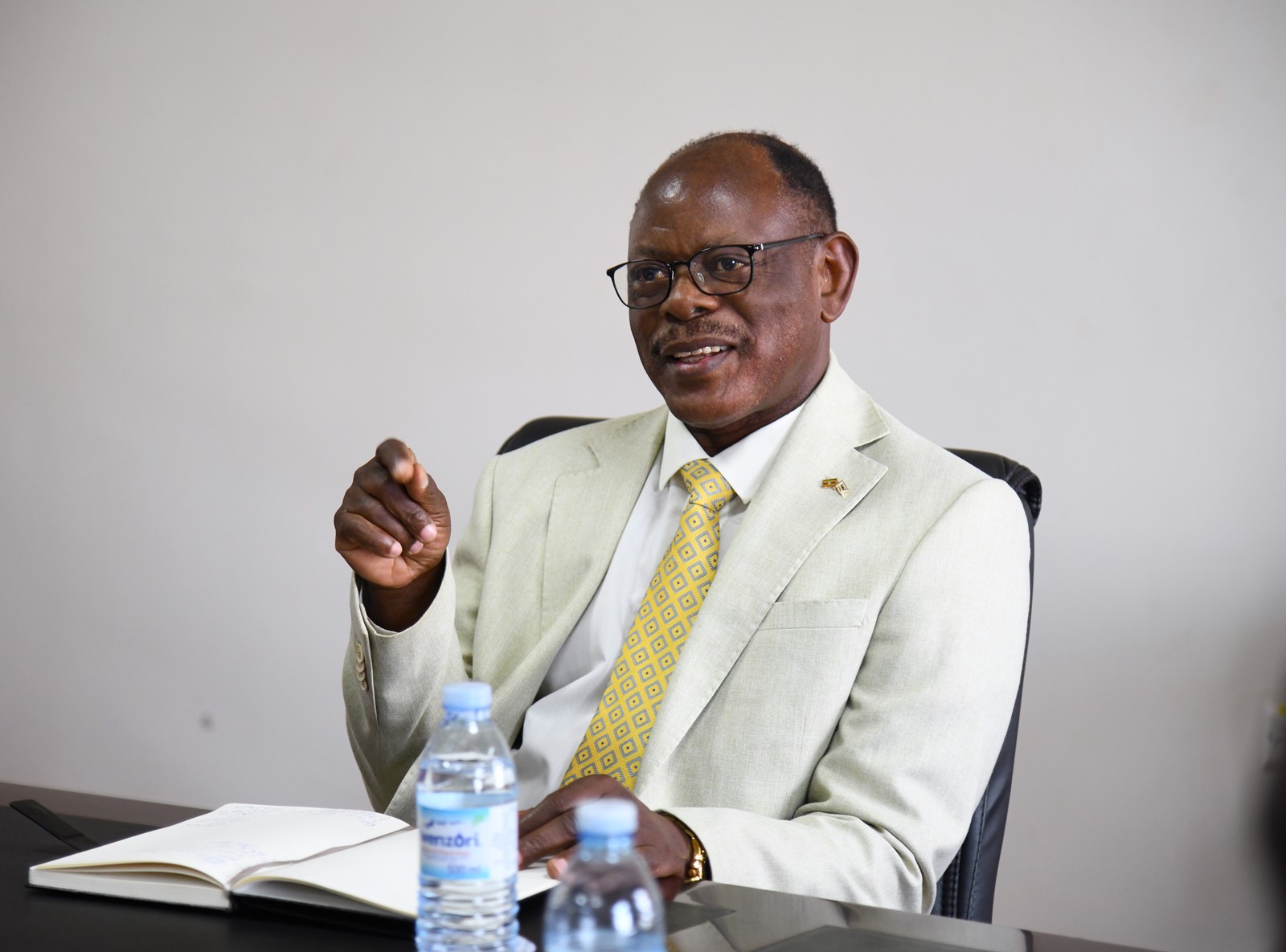
The Vice Chancellor also underscored the urgent need to modernize the University Hospital, proposing that Makerere begin incrementally establishing a teaching hospital using existing facilities and leveraging expertise of highly qualified consultants the College of Health Sciences (CHS). He reiterated that government budget ceilings remain a major constraint, but encouraged the committee to develop a concept that could be presented to Council and later supported through strategic engagement with the Ministry of Finance, Planning and Economic Development. Throughout his remarks, he applauded the Mak-HUC for its work and reaffirmed that even with the creation of a professional hospital board, the committee must remain central in representing service users.
Aligning Health Services with Sustainable Insurance Models
Prof. Bruce Kirenga the Principal College of Health Sciences responded by clarifying the committee’s efforts to align Makerere’s health services with real insurance models, including cost projections for covering additional family members and encouraging voluntary staff contributions where necessary. He acknowledged the complexity of expanding service coverage—especially in cases of chronic illness or high-cost procedures—but emphasized the committee’s commitment to cautious, sustainable planning. He confirmed that the College is working closely with the Hospital to improve services, attract specialists, and integrate students into the health system, a model that naturally draws academic staff into clinical roles without imposing unrealistic obligations.
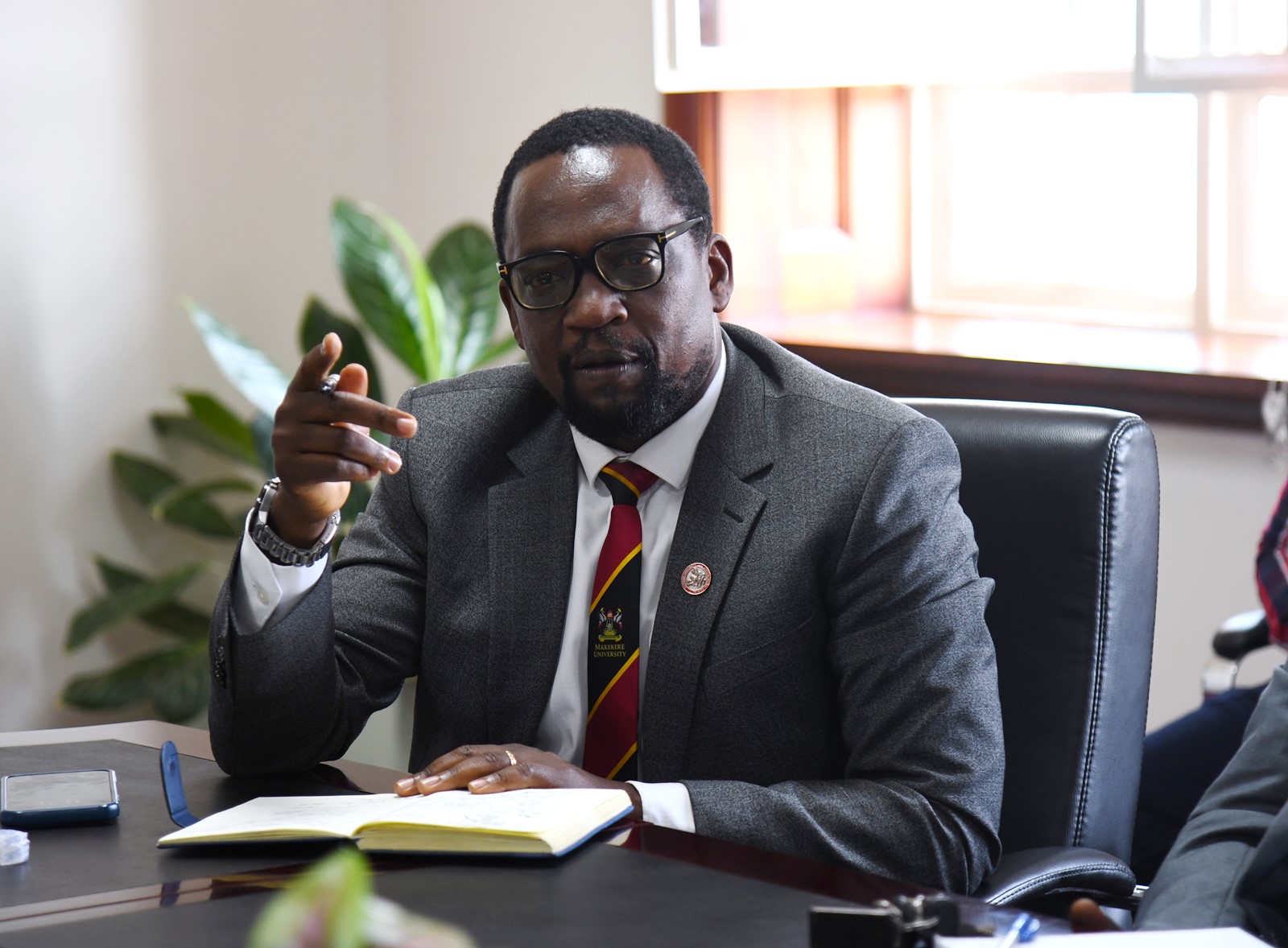
Prof. Kirenga also noted the College’s ongoing assessments of facility needs, including dialysis, ICU expansion, and equipment placement, stressing that the ultimate goal is a unified, well-structured health network across the University. He welcomed the Vice Chancellor’s support for transforming existing facilities into a teaching hospital and pledged to refine proposals that reflect both current realities and long-term institutional needs.
Committee Chair Reflects on Three-Year Achievements
Dr. Allen Kabagyenyi, Chair of Mak-HUC, reflected on the three-year journey with gratitude and pride, noting that the committee not only fulfilled its terms of reference but exceeded expectations. She highlighted major gains made under the Vice Chancellor’s support, including transforming the University Hospital into a self-accounting unit—an intervention that unlocked smoother financial management and accelerated service delivery. Dr. Kabagyenyi commended the strong collaboration with the Hospital administration, Human Resources Directorate, and other units, which ensured staffing stability even during institutional transitions.

She pointed to the expansion of referral partnerships—now totaling 29 health facilities nationwide—as a crucial achievement that guarantees continuity of care for staff and students wherever they are. She also emphasized the committee’s work in guiding policies for specialized treatment and cross-border care, strengthening fraud-prevention systems, and advancing digital transformation through an integrated health information system and the new Makerere University Health Services (MakHS) website. Dr. Kabagyenyi noted that these improvements have directly benefited staff and enhanced the overall quality of care, supported by close collaboration with the College of Health Sciences and access to some of the country’s best consultants. She concluded by underscoring the ongoing need for a comprehensive University Health Policy and expressed deep appreciation to the Vice Chancellor and University Management for their unwavering openness and support—attributes she credited for the committee’s success.
Highlights of Service Growth and Infrastructure Upgrades
The Chief, Makerere University Health Services, Prof. Josaphat Byamugisha, highlighted the significant progress achieved under the Health User Committee’s oversight, noting especially the steady rise in service utilization and renewed confidence among staff and students. He emphasized that trust in the University Hospital has grown organically—built not through advertising, but through improved patient experience, stronger systems, and word of mouth.

Prof. Byamugisha pointed to major achievements such as expanded Out-Patient Department (OPD) attendance, better student access to care, enhanced infrastructure including modernized theatres capable of complex procedures, and upgraded laboratories supported through framework agreements that ensure continuous equipment renewal. He noted that specialized clinics, increased inpatient capacity, and expanded referral networks have strengthened the Hospital’s reach and responsiveness. The Hospital is also taking on more research work and clinical training, partnering with units such as optometry, internal medicine, and the Clinical Trials Unit, with new collaborations—like the MasterCard Foundation—driving further growth.
He reaffirmed that the long-term vision of establishing a fully-fledged Makerere University Teaching Hospital is taking shape through coordinated efforts with the College of Health Sciences. Prof. Byamugisha credited the Vice Chancellor’s support for enabling these strides and expressed deep appreciation to all stakeholders contributing to the continued improvement of health services for the entire University community.
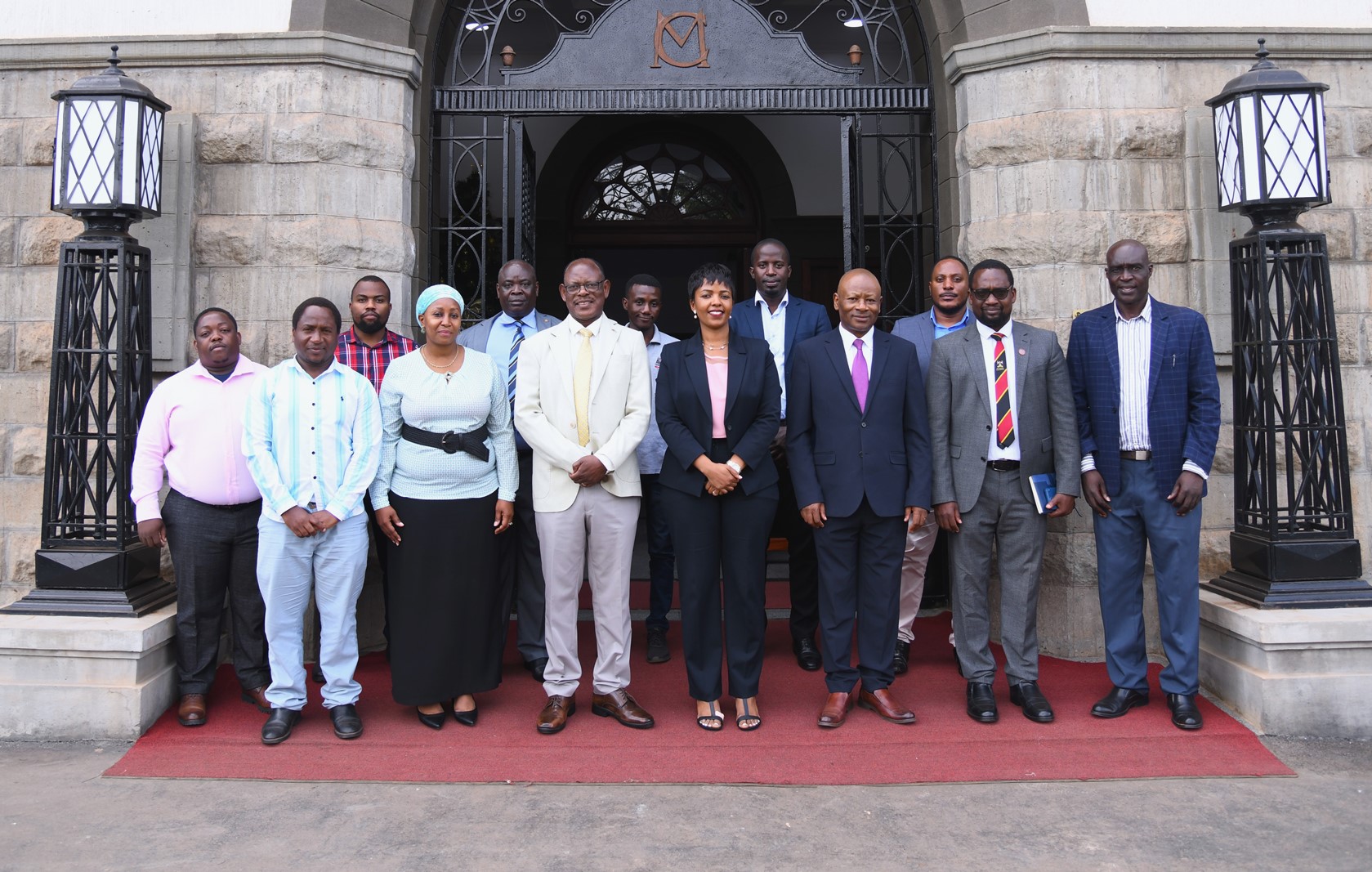
DICTS Unveils Modular Information System & Health Services Website
The Directorate for ICT Support (DICTS) presented the newly developed Makerere University Integrated Health Management Information System (MakIHMIS), designed around a modular system that streamlines all hospital processes. The platform integrates eight functional modules, including registration, triage, clinician workflows, inventory and medicines management, pharmacy dispensing, laboratory information management, user management, and linkages to both the Academic and Human Resource Management Information Systems ACMIS and e-HRMS respetively. Most of these modules are already active, enabling smooth patient registration, accurate record-keeping, real-time inventory tracking, and seamless access to student and staff data without duplication. Only two modules—land and insurance—remain under development before the system becomes fully end-to-end. The MakHS website on the other hand features information about hospital services, events, research activities, and staff profiles, offering both the university community and the public a centralized and efficient digital gateway to the hospital’s operations.

The term of the outgoing committee has officially concluded, and preparations are now underway for the incoming committee to assume its duties and continue advancing the work ahead.
Trending
-

 Research3 days ago
Research3 days agoMakerere University Launches Knowledge-Sharing Platform to Drive Innovation and Economic Growth
-

 General5 days ago
General5 days agoMakerere University Leaders Call for Excellence in Research and Supervision as Academic Staff and PhD Students Receive Certificates
-

 Humanities & Social Sciences1 week ago
Humanities & Social Sciences1 week agoCollege of Humanities and Social Sciences Launches Five Groundbreaking Publications
-
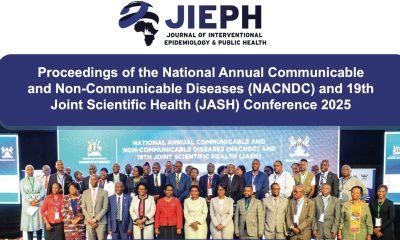
 Health2 weeks ago
Health2 weeks agoProceedings of the National Annual Communicable and Non-Communicable Diseases and 19th Joint Scientific Health Conference 2025
-

 Health2 weeks ago
Health2 weeks agoInside Uganda’s Silent AMR Crisis: Counterfeit Drugs, Antibiotic Overuse, and What Wakiso’s Evidence Reveals
